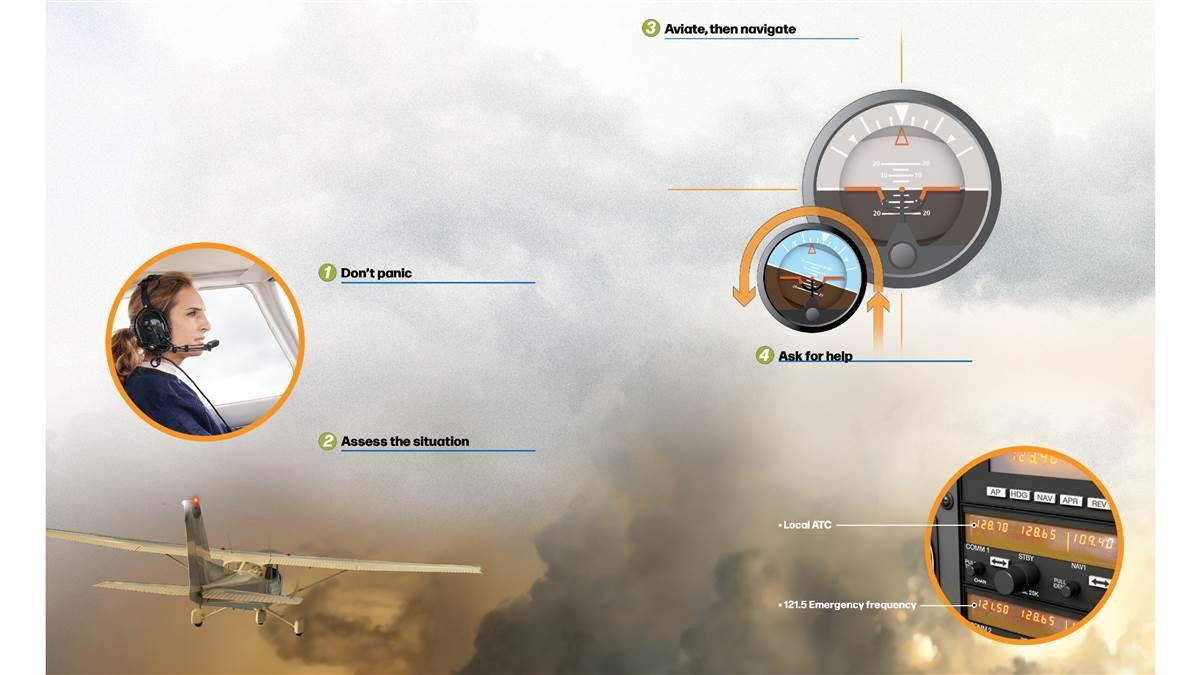Escape plan
Strategies for inadvertent IMC encounters

A safe outcome requires an escape plan. Every situation and weather pattern is unique, so the plan is frustratingly vague. Yet, following a few important principles will help keep you safe.
1. Don't panic
It may sound like obvious advice, but don’t panic. Airplanes fly the same in clouds as they do in the clear, so unless you’re in a massive thunderstorm or picking up ice, you are the biggest risk factor in the situation. Keep flying the airplane. Do whatever it takes to stay calm. Take a deep breath, talk to yourself, or intensify your focus. In other words, take a second to ensure you are still in charge.
2. Assess the situation
Often the advice to escape inadvertent encounters with instrument conditions is to make a 180-degree turn back. That might be the right tactic, but it might not. Is the cloud getting brighter? Going straight ahead might be faster. Did you brush up against the bottom? A quick descent will suffice. Think first, and then act.
3. Aviate, then navigate
Your only job at this moment is to maintain control of the airplane. Worrying about where you are and where you’re going can come later. It’s easiest to fly straight and level, and the easiest way to do that is to maintain a focus on the attitude indicator. If turning around seems like the best option, keep the bank to less than 20 degrees and don’t worry about being exact on the rollout heading.
4. Ask for help
Only if you’re sure that you’ll be in the clouds a long time does it make sense to ask air traffic control for help. That’s because the attention required to tune the radio, activate the frequency, and then speak is all focus that should be dedicated to flying the airplane. ATC will ask you lots of questions that will require you to further divide your attention, such as your location and altitude, number of people aboard, and so on. If you need help getting down from being stuck on top, or you’re cruising in a large area of poor visibility, it’s a good idea to ask for help. Otherwise, focus on flying.



